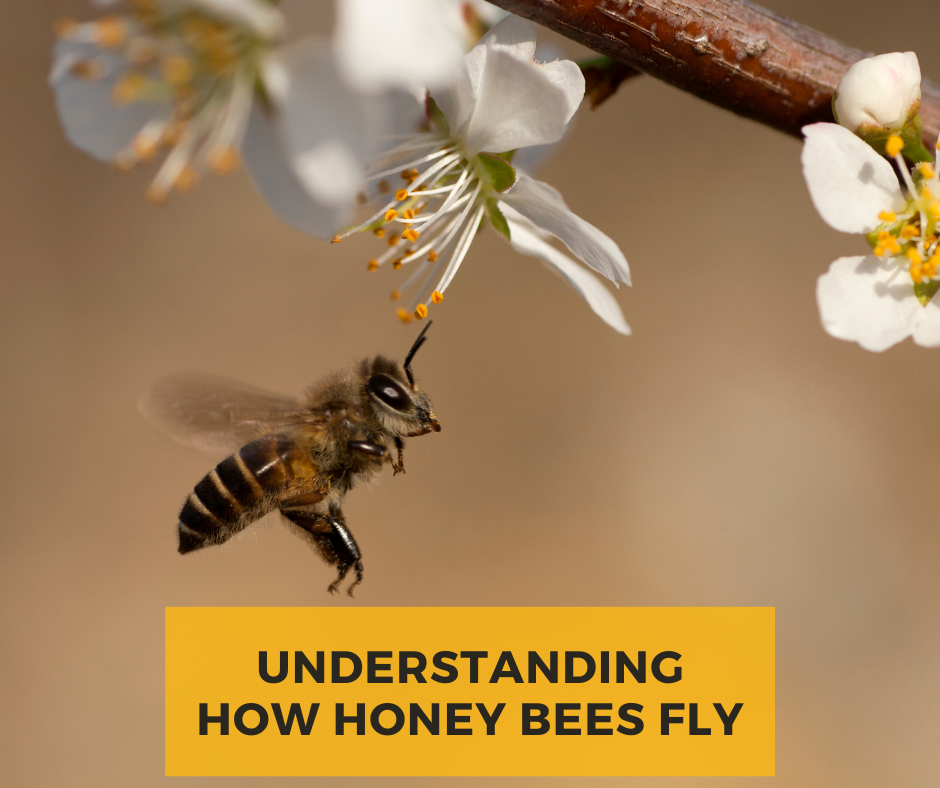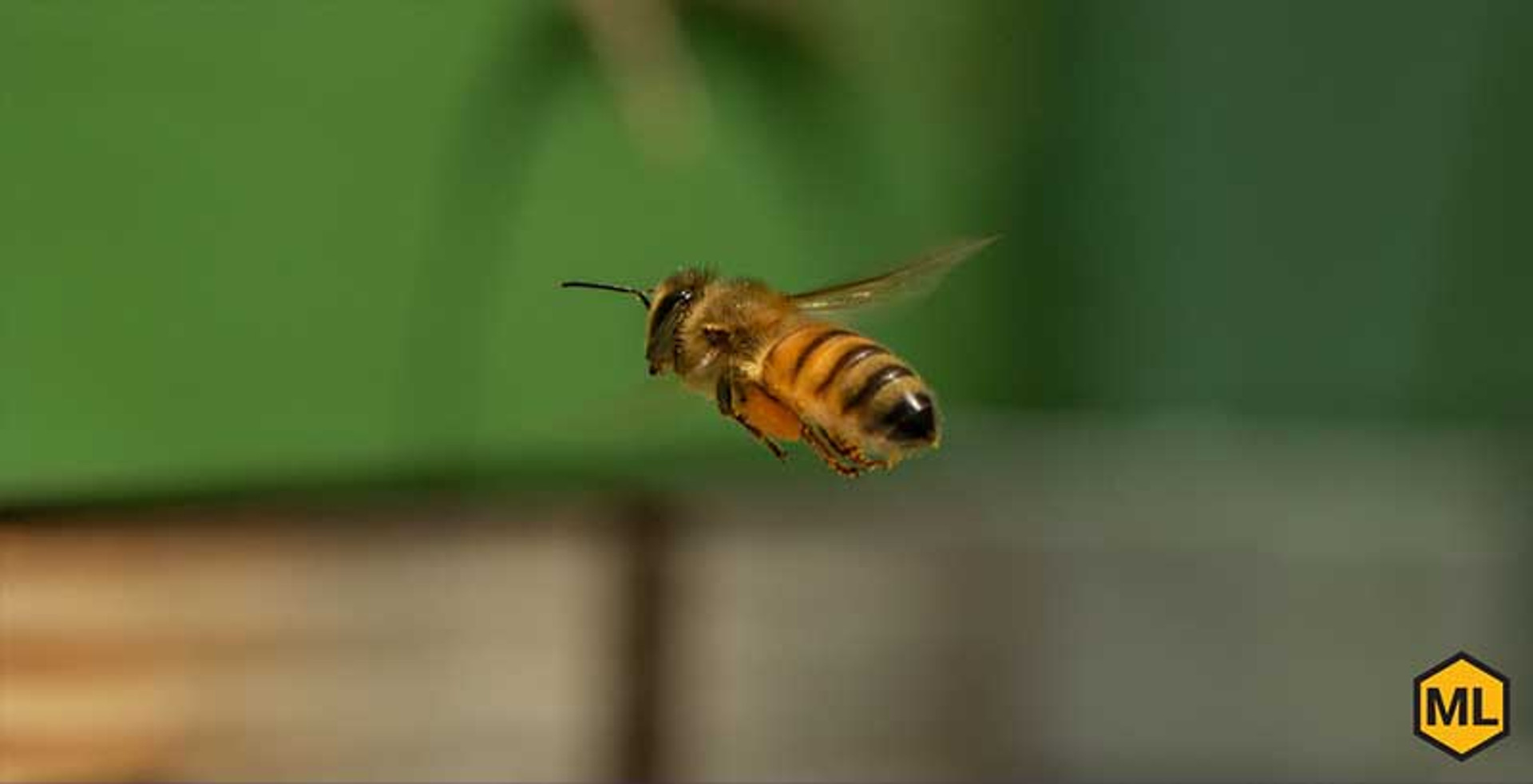Understanding How Honey Bees Fly
For many years, scientists—along with many other curious individuals—wondered how honey bees managed to fly. Their round, fuzzy bodies and small, haphazardly flapping wings are far from aerodynamic.
Unlike other creatures that take to the air, honey bees don’t seem like they should be able to buzz around the way they do. Yet they do, and years of research and observation have taught us how. If you’re buzzing with curiosity about this accomplishment, check out our guide to understanding how honey bees fly.

The Anatomy Of A Honey Bee
The first step in understanding how honey bees fly is to understand the parts of the wing. Honey bees have two wings on each side of their body: the forewing and the hind wing. A comb-like ridge called the hamuli holds the forewing and the hind wing together, allowing them to act as one large surface when the honey bee flies.
To achieve flight, the honey bee’s tiny wings twist and rotate along its body, making a sweeping motion as it flies. This flexible movement generates more lift, allowing the honey bee to carry its relatively heavy body—and often heavy loads of pollen—through the air.
The Role Of The Thorax
The wings aren’t the only body parts necessary to achieve flight. A honey bee’s thorax also plays a crucial role in the process, making it key to understanding how honey bees fly. Muscles in the thorax squeeze in two different directions: up and down, and left to right.
The honey bee alternates flexing these muscles to create a rhythmic, pulsating pattern through the thorax. These pulsations cause the wings to beat rapidly—over 230 times per second!
Honey Bee Flight Compared To That Of Other Insects
Honey bee flight confounded scientists for years because, compared to that of other flying insects, the process is inefficient. Generally speaking, larger creatures have slower wingbeats. Compare, for example, the slower wings of an eagle to the rapid pace of a hummingbird’s wings.
Honey bees are relatively large insects, but they beat their wings much more quickly than fruit flies and other smaller bugs do. Furthermore, many flying insects move their wings in wide arcs, sometimes up to half-circles. Honey bees make sweeping motions with their wings, but the wings only cover an arc of about 90 degrees. Why are honey bees different?
Some scientists believe their peculiar wings and flight muscles are evolutionary ticks that modern honey bees must live with. Others believe that the honey bees’ flight style allows them to carry heavier loads, such as full pollen baskets.
The more you learn about honey bees, the more fascinating they become. Are you eager to delve into the world of these curious little pollinators?
You can become a honey bee enthusiast yourself. Grab your honey bee supplies from Mann Lake, join your local beekeeping group, and learn more about why these little creatures are some of the most important members of our ecosystem.


